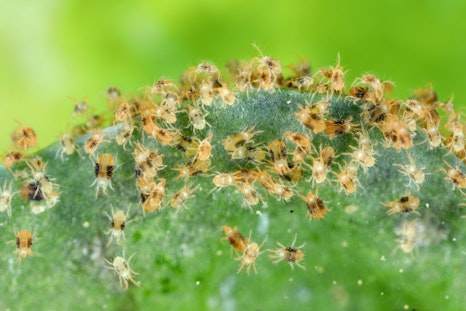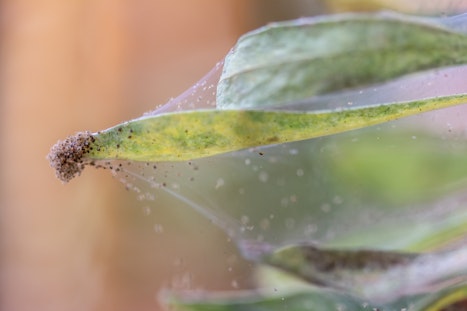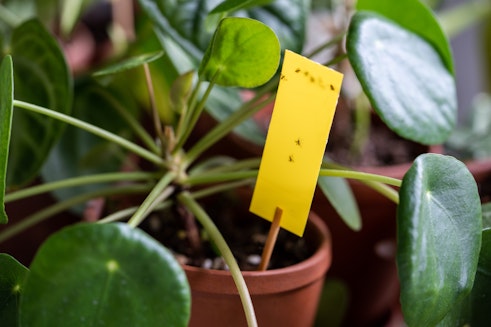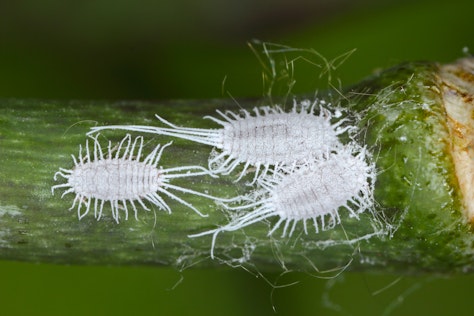
- Home
- Thrips - What are they and how do I get rid of them?
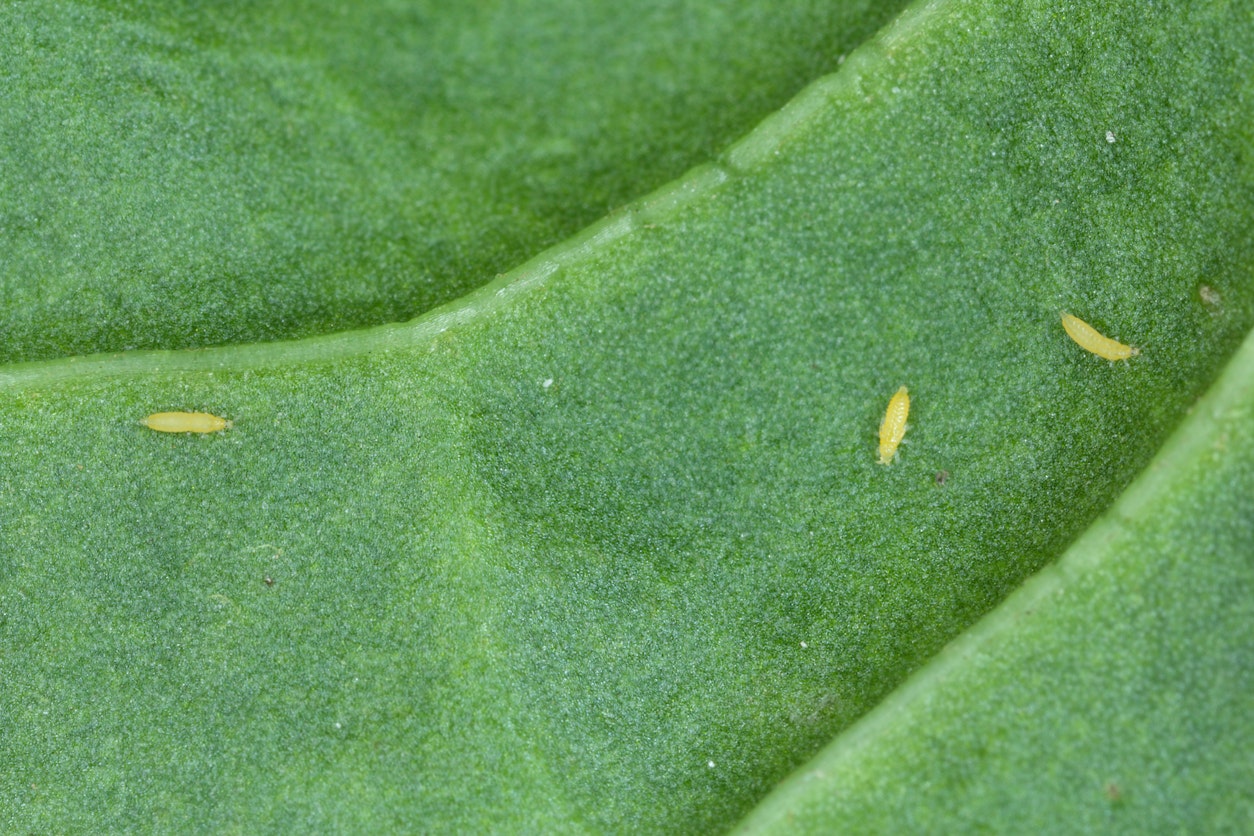
How can something so small do so much damage? This is something I asked myself time and time again while hunched over my plants, slapping little black and white bugs off the leaves with a paintbrush. These little bugs had systematically damaged huge spreading chunks of the tissue of my plants, creating what looked like little insect-governed continents on the leaves. I only wish I could have appreciated the artwork, but I could not. The bugs in question were thrips, and I knew that I’d have to do something to stop them. You may be here with the same goal, so this post intends to give you everything you need to know to stop the plight of the thrips, and restore peace to your houseplants!
Before you kick yourself and fear that your quality as a plant-parent is lacking, stop! Houseplants are a single part of a very complex system that you have brought into the house. In the wild, these ecosystems are controlled by gentle balance so that everything can thrive. Unfortunately, in a home, the aspects of the ecosystem that are missing can be those which keep things like pests from getting out of control. As a result, we as plant-keepers must intervene. This is true for plant keeping at any level: from an orchid in the kitchen window, to an elaborate botanical garden greenhouse.
What are thrips?
Thrips (Thysanoptera) are an Order of insects of over 7,700 known species. Most thrips are fungivorous, but a small number are plant-eating and are able to decimate horticultural spaces. The thrips small size, nimble agility and ability to reproduce asexually, makes them a brutal opponent for the botanist or horticulturalist respectively. Thrips have a life cycle of just over a month, and can start reproducing after as few as 8 days, meaning their number can increase quite dramatically over short periods of time. They are also responsible for carrying various plant diseases and viruses.
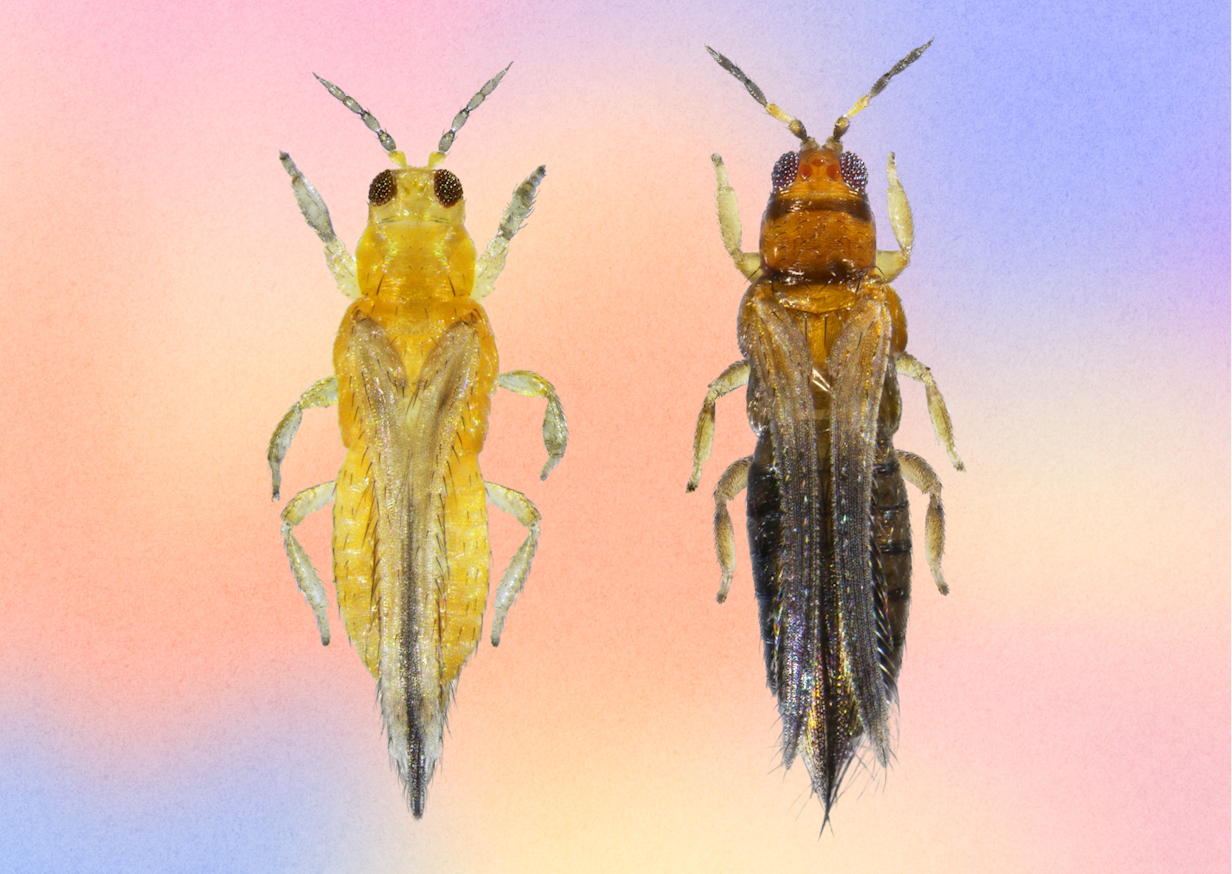
How do I know if I have thrips?
The symptoms to look out for are as follows:
- Discoloured shapes & patterns: Feeding thrips tend to sit and gouge themselves in one area of the plant, over time this area gets damaged and often presents as a light, sickly-green or a silvery colour.
- Deformed new growth: As thrips feast, the sugars that the plant would use to sustain and materialize new leaves and roots are redirected to fill the thrips' bellies! Resultantly, the leaves often come out in an odd shape.
- Black spots: Not to be confused with the plant disease of the same name, the black spots that are evidence of thrips tend to be tiny and numerous, and are found on the underside of a leaf. They are usually surrounded by silvery leaf damage. This is thrip dirt, which is dropped as the thrip feeds, hence its close proximity to the damage.
- White bugs: Female thrips are off-white little bugs that walk slowly around your leaves, lodging themselves in place and feasting. They can be difficult to spot as they are very small, and are usually in large numbers.
- Black bugs: Male thrips are bigger than the female, long bodied, winged and are a black/brown colour. They tend to move around the leaf a lot more, and can even take flight to spread themselves to other leaves. These are the thrips that cause the most damage.

How do I get rid of thrips?
There are several solutions to remove thrips, depending on the severity of the infestation. It is worth noting that, at any one time, thrips can be present on the leaf, stem and soil of a plant, and in the air at the same time. A combination of methods that tackle thrips in all stages and places is the most effective
- Use sticky traps: Blue and yellow sticky traps are a good way to catch thrips that have left plants and are seeking a new spot to settle down. The trap attracts them, then when they land upon it they are stuck, and cannot spread themselves any further through the home.
- Spray: For light infestations, thrips can be removed by force, with a spray of water from a pressurised bottle or in the shower. This can physically remove them from the plant without the use of any chemicals or materials.
- Wipe: Similarly, wiping the stems, petioles and leaves of the infested plant with a wet cloth can physically remove them, and eliminates any possible tissue damage from the impact of a spray bottle.
- Prune: Sometimes, the infestation can be present only on one section of a plant, if possible, the removal of this section can eliminate the infestation entirely. Otherwise, the removal of any affected leaves can also stop the infestation. This is a good method for stronger plants that may only be affected on their soft, new growth.
- Dispose: For severe infestations that cannot be controlled, disposing of the affected plant can be the only solution. This ensures that the infestation cannot spread to other, nearby plants.
- Alcohol: A combination of 70% rubbing alcohol and water, applied to the body directly, dissolves the exoskeleton and ensures that the thrip succumbs to the elements and dies. This is true also for thrip eggs, and should be reapplied every few days until the infestation is gone.
- Insecticidal soap: Mixing a concentration of Insecticidal soap and water, and applying it to all parts of the plant with a spray bottle is a good method to ensure that the whole plant is treated.
- Repotting: For root infestations, changing the soil and washing the roots with insecticidal soap can be a good solution to ensure that the thrips and their larvae are not hiding in the soil.
- Horticultural oil: Applying neem oil can coat thrips and their eggs and suffocate them. The oil can be mixed with water and sprayed directly onto the plant, or poured into the soil for root infestations. These processes should be repeated every few days until the infestation goes away.
- Natural predators: Introducing natural predators can be an effective and long lasting way to control a thrips infestation. Predators can be found easily online and are best for greenhouses. But for indoor environments, you can use a combination of thrip fighting beetles such as Rove beetles (Dalotia coriaria), Thrip Killers (Orius lavigatus) or predatory Mites (Amblyseius), which prey on the thrips and its eggs, without harming any plants.
The best way to ensure complete control over a thrips infestation is to use a combination of the above techniques, and to regularly check all plants, and repeat processes until there has been no sign of thrips for at least a week.
Jonathan Davies
Jonny has worked at Root since May 2023. His love for plants was inherited initially from his grandparents and parents, but really took off once he moved into his own place, where he started picking up small plants and was fascinated by watching how they grow and change over time. Jonny has a degree in Archaeology and Classics from the University of Sheffield, and a masters in Egyptology from Swansea University, where he primarily focused on garden culture in the ancient world, which he has managed to extend to a PhD thesis in the University of Liverpool, where he has been able to combine his love for plants with his love for ancient language and culture. Jonny loves being in the natural spaces around North Wales and Cheshire where he used to go growing up, and often spends hours examining the plants and trees, and kicking up the leaf litter searching for mushrooms and insects. He is fascinated most by plant biology, taxonomy and learning about ecosystems and interactions between plants and their environmental counterparts, and enjoys tending to his varied array of houseplants, and ongoing ‘plant projects’, such as growing plants from seeds and creating living epiphyte displays. Aside from his green thumb, his other interests include: art, reading, listening to and playing music in the company of his cats, Spooky and Boo.
More by Jonathan DaviesRelated Articles
View all articles
